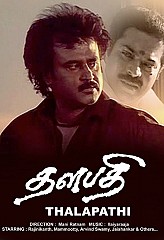
Be it Hollywood, Indian or any regional cinema for that matter, the history of cinema is not just the history of superstars and blockbusters, but that of film technology too. December 18, 1908, is marked as a crucial date in our past for this very reason. Hollywood’s leading movie companies at the time - Biograph, Vitagraph, American Mutoscope, and more, were summoned by none other than Thomas Edison, whose laboratory invented the first motion picture camera, Kinetograph and Kinetoscope, a motion picture viewer.
The agenda of the urgent meeting was to sign a monopolistic peace treaty between Edison’s company and its competitors. Together, they formed the Motion Picture Patents Company (MPPC), which held all the patents covering projectors, cameras, and film stock, and authorized MPPC to issue licenses and collect royalties from movie producers, distributors, and exhibitors.
Within a decade, the American motion picture industry was flourishing and with the advent of MPPC, Edison tightened his grip on the untouched mountain of film exhibition business. Thus, the friction and power play have been playing crucial roles in the history of cinema since then, while shadows of a complete theatre shutdown are looming over the South Indian film industry. The South film industry found itself at the centre of mayhem when the apex organizations of the film production, distribution and exhibition came together and decided to shut down theatres in the four major South Indian states from March 1.
The reports say that the hefty decision was a response to the alleged exorbitant processing fee of the digital projection solution providers. Both the parties are in a stalemate after months of negotiations regarding the rent and processing fee payable to the digital service providers. Reports also suggest that the Telugu Film Chamber of Commerce demands a cut in the processing fee of digital service providers by splitting it into various small slabs with an interval of six months so that the producers and distributors can have a breathing space.
The B and C class theatre owners argue that the cost of transition to digital projection and processing fee are beyond their reach due to declining turnout in cinema halls. Another important demand from the cinema organizations is reduced screen time for in-cinema ads in theatres. In January, there were reports suggesting that the Tamil Film Producers Council is also planning to renegotiate the fees charged by digital projection companies. The row between two major pillars of the film industry started ever since the penetration of digital projection technology in Indian film industry in the early 2000's.
Within a decade, digital theatre projection, along with in-cinema ads, became the norm in the world’s biggest film producing and ticket selling nation. The transition was not a cake walk as it was accompanied by cries and fusses from small town and rural theatres as the cost of transition was too much for them. Unable to meet the cost of digital transition, the small town theatres fell victim to the radical change and the multiplex screens in the cities became flag-bearers of the change.
While the digital transformation was in full swing, an important question popped up, which is still relevant in the backdrop of the upcoming theatre shutdown - “Why are we, the viewers, going to the movies?” It’s not just that viewers always want something bigger, spectacular and tranquillizing extravaganza; movies connect, reflect, absorb, soothe, and identify with the viewers' psyche. The production houses, digital service providers and the multiplexes exist because the history of cinema is not an exclusive history of film technology, but it is the history of how cinema lived with and dreamed for the audience.
If the allegations of the apex bodies of film production, distribution and exhibition are correct, the digital projection companies should relax their charging structure to draw on the immense potential of the Indian cinema exhibition market. Moreover, video streaming services like Netflix, Amazon and Hotstar are closing in on at an alarming speed, with exclusive video content to lure the viewers. Under these circumstances, a complete theatre shutdown is like killing a goose that lays a golden egg. For the digital projection companies, a masochistic and self-destructive act of choking the last breath out for the theatres and, most importantly, a violation of the fundamental cinematic right of the moviegoer to dream and live the other lives inside the darkness of a cinema hall!
Behindwoods is not responsible for the views of columnists.









